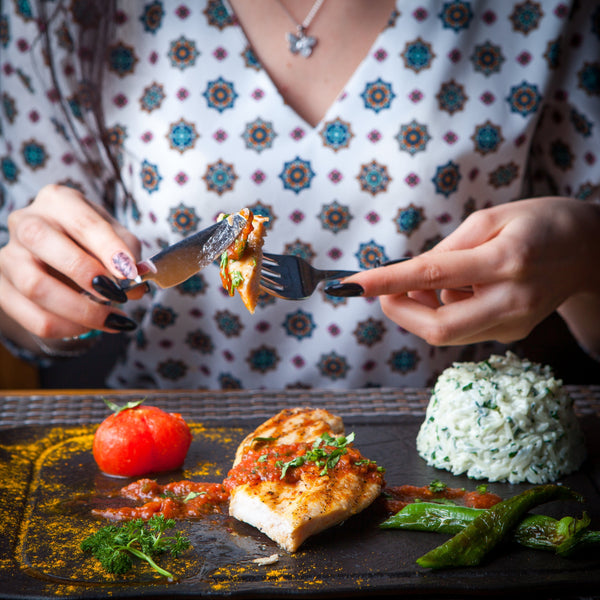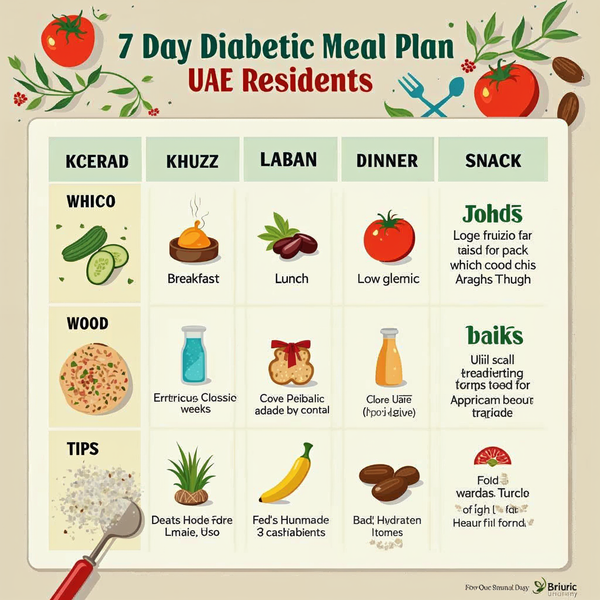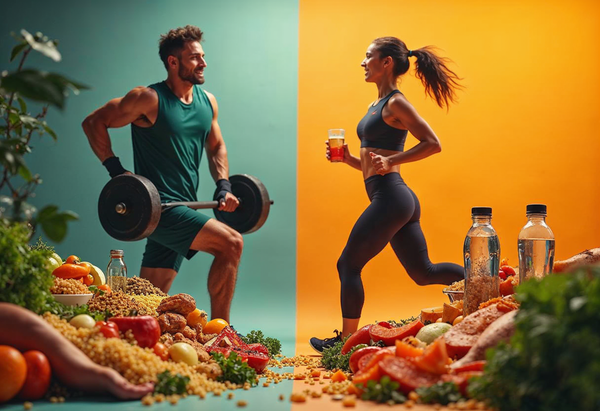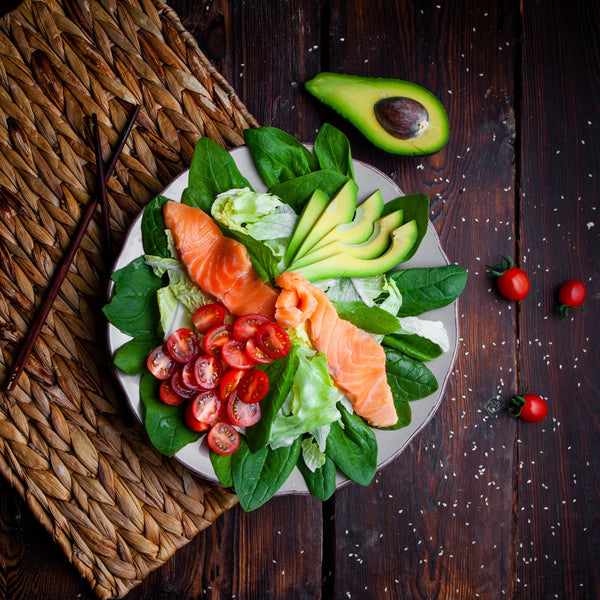Paleo Diet Food List: What to Eat and Avoid
by JUSTINE YOLANDA

Introduction
Figuring out what to eat on a Paleo diet can be confusing. With so much information out there, it’s easy to wonder: Is rice Paleo? What about dairy? Can I eat potatoes? If you’ve been asking these questions, you’re not alone.
The Paleo diet is based on eating whole, nutrient-dense foods that our ancestors thrived on. This means focusing on lean meats, fresh vegetables, fruits, nuts, and healthy fats, while avoiding processed foods, grains, dairy, and refined sugars. The goal is to eliminate modern, heavily processed ingredients and return to a more natural way of eating that supports better digestion, steady energy, and overall well-being.
In this guide, we’ll break down exactly what foods you can and can’t eat on Paleo. You’ll get a detailed food list, a sample grocery list, and practical tips to make Paleo eating easy. Whether you're just starting or refining your approach, this guide will give you everything you need to navigate Paleo with confidence.
What is the Paleo Diet?
The Paleo diet is a way of eating that mimics the diets of our ancestors from the Paleolithic era long before modern agriculture and processed foods. The core idea is to consume whole, unprocessed foods that support natural health, energy, and digestion.
At its foundation, the Paleo diet focuses on:
-
Lean meats & fish – Grass-fed beef, free-range poultry, and wild-caught seafood.
-
Vegetables & fruits – A variety of fiber-rich, nutrient-dense plant foods.
-
Nuts & seeds – Great sources of healthy fats and protein.
-
Healthy fats – Avocados, olive oil, coconut oil, and nuts instead of processed vegetable oils.
This diet eliminates grains, legumes, dairy, refined sugars, and processed foods, which are believed to contribute to inflammation, digestive issues, and blood sugar imbalances.
Common Misconceptions About Paleo
-
“Paleo is just about eating meat.” → False! While protein plays a role, the diet is plant-heavy, emphasizing vegetables, fruits, and natural fats.
-
“Paleo is too restrictive.” → Not true! There’s a wide variety of foods to enjoy, from grilled meats and roasted veggies to fruit smoothies and nut-based snacks.
-
“Paleo is a fad diet.” → Unlike short-term diets, Paleo is a sustainable, long-term approach to healthy eating based on real, whole foods.
By focusing on natural, nourishing foods, the Paleo diet supports better digestion, stable energy, and overall well-being—without the processed additives found in modern diets.
Paleo Diet Food List: What to Eat
The Paleo diet is all about whole, natural foods that nourish the body and promote long-term health. Below is a detailed breakdown of the foods you can enjoy on Paleo, categorized for easy reference.
Protein Sources (Meat, Fish, and Eggs)
What’s Allowed:
-
Grass-fed meats (beef, lamb, bison, venison)
-
Free-range poultry (chicken, turkey, duck)
-
Wild-caught fish (salmon, mackerel, tuna, sardines)
-
Pasture-raised eggs
Why?
These protein sources provide essential amino acids, omega-3 fatty acids, and important vitamins like B12 and iron. Choosing grass-fed and wild-caught options ensures you’re getting higher-quality nutrients without harmful additives.
Vegetables & Fruits
What’s Allowed:
-
Vegetables: Leafy greens (spinach, kale), cruciferous veggies (broccoli, cauliflower, Brussels sprouts), root vegetables (carrots, sweet potatoes, beets), peppers, onions, zucchini, and mushrooms.
-
Fruits: Berries (blueberries, strawberries, raspberries), citrus fruits (oranges, lemons, grapefruits), apples, bananas, pears, melons, and stone fruits (peaches, plums).
Why?
Vegetables and fruits are packed with fiber, vitamins, minerals, and antioxidants that support digestion, immunity, and overall health. Unlike processed snacks, these whole foods provide natural energy without sugar crashes.
Healthy Fats & Oils
What’s Allowed:
-
Avocados
-
Extra virgin olive oil
-
Coconut oil
-
Ghee (clarified butter)
-
Animal fats (from grass-fed sources, in moderation)
Why?
Healthy fats are essential for brain function, hormone regulation, and sustained energy. Unlike processed vegetable oils, Paleo-friendly fats are anti-inflammatory and nutrient-dense.
Nuts & Seeds
What’s Allowed:
-
Almonds, walnuts, macadamia nuts, cashews
-
Chia seeds, flaxseeds, pumpkin seeds, sunflower seeds
Why?
Nuts and seeds are excellent sources of healthy fats, protein, and micronutrients like magnesium and zinc. They make for a great snack option or a crunchy topping for meals.
Beverages
What’s Allowed:
-
Water (plain or infused with lemon, cucumber, or herbs)
-
Herbal teas (chamomile, peppermint, ginger)
-
Black coffee (in moderation, preferably organic)
-
Bone broth (rich in collagen and gut-friendly nutrients)
Why?
Staying hydrated is key to digestion, energy levels, and detoxification. Unlike sugary drinks, these options support hydration without artificial ingredients.
By sticking to these wholesome, natural foods, you’ll fuel your body with everything it needs to thrive on Paleo!
Paleo Diet Food List: What to Avoid
While the Paleo diet emphasizes whole, unprocessed foods, it also requires eliminating foods that can cause inflammation, digestive issues, and blood sugar imbalances. Below is a breakdown of foods to avoid on Paleo and why they don’t fit within this lifestyle.
Grains & Legumes
Avoid: Wheat, rice, oats, corn, barley, rye, beans, lentils, soy, and peanuts.
Why?
-
Grains and legumes contain anti-nutrients like phytates and lectins, which can interfere with nutrient absorption and digestion.
-
Many grains cause blood sugar spikes, leading to energy crashes and cravings.
-
Legumes, including beans and soy, may cause bloating and gut irritation for some people.
Dairy Products
Avoid: Milk, cheese, yogurt, cream, and butter (except grass-fed ghee).
Why?
-
Many people struggle with lactose intolerance, which can lead to bloating, acne, and digestive issues.
-
Dairy is not considered part of ancestral eating, as early humans didn’t consume milk after infancy.
-
Grass-fed butter and ghee are sometimes allowed because they contain minimal lactose and provide healthy fats.
Processed Foods & Sugars
Avoid: Chips, candy, baked goods, sugary cereals, soda, artificial sweeteners, and flavored yogurts.
Why?
-
Highly processed foods contain refined sugars, preservatives, and unhealthy additives.
-
Sugar consumption is linked to inflammation, weight gain, and insulin resistance.
-
Artificial sweeteners can disrupt gut bacteria and increase cravings.
Unhealthy Oils & Trans Fats
Avoid: Canola oil, soybean oil, corn oil, sunflower oil, margarine, and hydrogenated fats.
Why?
-
These oils are highly processed and oxidized, which can lead to chronic inflammation.
-
Trans fats, commonly found in processed foods, have been linked to heart disease and metabolic disorders.
-
Paleo encourages natural fats like olive oil, coconut oil, and avocado oil instead.
Alcohol & Sugary Beverages
Avoid: Beer, sweetened cocktails, soda, fruit juices, and sports drinks.
Why?
-
Alcohol disrupts metabolism and can lead to weight gain and liver stress.
-
Beer contains gluten, which is inflammatory for many people.
-
Fruit juices, while natural, contain high amounts of sugar without fiber to slow absorption.
By eliminating these foods, you’ll reduce inflammation, improve digestion, and maintain steady energy levels while following the Paleo lifestyle.
Sample Paleo Grocery List
Transitioning to a Paleo diet is easier when you have a clear shopping list. Below is a simple guide to help you stock up on whole, nutrient-dense foods for your next grocery trip.
Proteins
-
Grass-fed beef
-
Free-range chicken
-
Wild-caught salmon
-
Pasture-raised eggs
-
Turkey, lamb, or bison
Vegetables & Fruits
-
Leafy greens (spinach, kale, arugula)
-
Cruciferous vegetables (broccoli, cauliflower, Brussels sprouts)
-
Root vegetables (sweet potatoes, carrots, beets)
-
Low-sugar fruits (berries, apples, pears)
-
Citrus fruits (oranges, lemons, grapefruits)
Healthy Fats & Oils
-
Avocados
-
Extra virgin olive oil
-
Coconut oil
-
Nuts (almonds, walnuts, macadamia nuts)
-
Seeds (chia seeds, flaxseeds, pumpkin seeds)
Pantry Staples
-
Almond flour or coconut flour
-
Raw honey (in moderation)
-
Apple cider vinegar
-
Herbs and spices (turmeric, cinnamon, garlic, rosemary)
Beverages
-
Herbal teas
-
Black coffee (without sugar or dairy)
-
Filtered water
By using this Paleo-friendly grocery list, you can easily plan nutritious meals that align with ancestral eating habits.
Common Mistakes to Avoid When Following Paleo
Switching to a Paleo diet can be highly beneficial, but many beginners make mistakes that can hinder their progress. Here are some common pitfalls to watch out for:
1. Relying Too Much on Meat
While protein is essential, a Paleo diet is not just about eating meat. Many people focus too much on steak and chicken while neglecting fiber-rich vegetables. Aim for a balanced plate with plenty of colorful veggies to support digestion and overall health.
2. Not Getting Enough Healthy Fats
Fat is a crucial energy source on Paleo, yet some people fear fats or don’t consume enough of the right ones. Instead of avoiding fats, focus on healthy sources like:
-
Avocados
-
Nuts and seeds
-
Olive oil and coconut oil
These support brain function, hormone balance, and long-lasting energy.
3. Overindulging in “Paleo-Friendly” Treats
Many packaged snacks labeled “Paleo” (e.g., almond flour pancakes, date-based energy bars) are still high in sugar and calories. While these can be enjoyed occasionally, relying on them too often can slow weight loss and blood sugar balance. Stick to whole, unprocessed foods as much as possible.
4. Failing to Meal Prep
A lack of preparation often leads to grabbing non-Paleo options out of convenience. Avoid this by:
-
Batch cooking proteins and veggies
-
Keeping Paleo-friendly snacks on hand
-
Planning meals in advance
By avoiding these mistakes, you’ll have a more balanced, nutritious, and sustainable Paleo journey.
Final Thoughts
The Paleo diet is all about returning to the basics—eating whole, unprocessed foods that nourish the body. By focusing on lean protein meals, fresh vegetables, healthy fats, and natural sources of carbohydrates, you can improve digestion, maintain steady energy levels, and support overall well-being.
If you're new to Paleo, don’t feel pressured to overhaul your diet overnight. Instead, start with small, manageable changes:
-
Swap processed snacks for nuts and fresh fruit.
-
Replace refined oils with coconut oil or olive oil.
-
Choose grass-fed meats and wild-caught fish when possible.
By making gradual adjustments, you’ll find it easier to stick to Paleo long-term and enjoy the benefits of cleaner eating. What’s one Paleo-friendly swap you’ll try first? Let us know in the comments!




